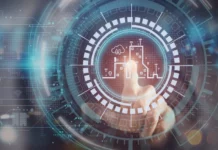Amidst the ebb and flow of lockdowns and restrictions over the past two years, the e-commerce industry has grown significantly, with several online retailers doubling or even tripling their growth through the pandemic period. This massive surge in consumers is not without its problems, and e-commerce players are starting to explore new innovations and technology that can help them continue to meet the demands of shoppers in Asia and beyond.
At a recent roundtable discussion hosted by Lenovo, participants discussed these recent developments in e-commerce, and what the future of the industry might look like.
Catching up to industry leaders
Although the industry has grown exponentially in recent times, there was still a sense of playing catch-up to stalwarts in the field, such as Amazon and Alibaba, who had clear value propositions and unique selling points. Amazon had a strong focus on customer experience and digitalisation, whilst Alibaba dominated in the area of speed and volume.
Local circumstances also posed challenges to the expansion and operations for some players. For example, in Indonesia, weaknesses in national infrastructure have created some connectivity issues outside of the urban centres, which has impacted expansion to smaller cities in the country. Their consumers also preferred traditional payment methods, especially in rural areas, as they were still less knowledgeable about the newer mediums of payment.
Whilst e-commerce players may be used to the rapid speed of change, they will also need to bring their partners and suppliers together with them on the developmental journey. With many of them coming from brick-and-mortar retailers or traditional industries, they may not be able to transform at the same pace as e-commerce, leading to product and supply bottlenecks. This has led to the need for closer strategic partnerships that drive innovation across the supply chain, as well as agile collaborations with multiple suppliers and players to consistently develop and meet consumer demand.
However, there were areas of progress. Recent trends have shown increasing acceptance for e-commerce even for big ticket items such as refrigerators or air-conditioners, which may be signs of the expanding scope of e-commerce. Regional players were also experimenting with new features such as group-buying or live-streaming, which had gained popularity in countries such as China.
Scaling up e-commerce operations
The rapid growth has also led to various issues in scaling up the operations to meet the increased consumer demand. As more buyers and sellers enter the platforms, the amount of information available to companies has exploded, leading to questions on how to adequately manage and extract value from the data. This leads to the need to quickly scale up IT infrastructure to support the data lake from different markets and regions. This large amount of data leads to speed issues when trying to extract relevant data on particular demographics or products. This data also raises the possibility of applying big data and machine learning to the customer experience, such as more accurate product recommendations and better analysis of customer demographics.
Furthermore, developing such solutions often comes at a cost, and companies are trying to bring down the cost of some of these new technologies. Whilst the upfront capital might be high, one way to rationalise these increases might be to measure the per-transaction costs, shared Ngai Wai Chung, Director (Cloud Service Providers and Hyperscale), APJ, at Lenovo. “The entire infrastructure is built to support transactions, and we may have millions or billions of transactions,” he shared. “From a capex perspective, building a modern and efficient IT infrastructure with higher densities can help to bring the cost down.”
Another factor affecting the scalability of e-commerce was seasonality. Many e-commerce companies see huge spikes in traffic around major shopping events (such as Lazada and Shopee’s annual 9.9 sales), which means that their IT infrastructure needs to be built to handle these surges. One popular way of scaling up in these scenarios would be to add capacity or performance to the system by expanding horizontally, and adding more servers to resolve the bottleneck expected around peak periods. However, another approach could be the use of hybrid cloud technologies, where companies work with other cloud providers to share capacity when traffic overflows onto other cloud environments or the public cloud.
The huge number of sales has also meant a heavier burden on post-sale service such as returns and refunds. This has called for closer partnerships and integration between e-commerce companies and their logistics partners, whether in-house or third party. For example, having a clear industry standard and common technology when it comes to APIs (application programming interfaces) have helped allow easier integration, allowing consumers to more easily track, receive, and return their packages on the different platforms.
Unlocking the potential of data
In addition to the challenges faced in the industry, participants also cast their eyes towards the future of the sector to discuss its key trends and developments. Building on the earlier conversation around data and intelligence, many saw the potential for increased use of machine learning and artificial intelligence across all facets of the value chain.
For consumers, this could mean more intelligent search functions and recommendations based on your personal preferences. “Customers seldom know what they really want, as they cannot beyond what they already think, know, and see”, shared an attendee from Malaysia. “Data will allow us to give more options to customers to meet their needs.”
On the backend, data also can be implemented to create faster and more efficient supply chains. Looking at data on the amount of stock and frequency of purchases, models can be created that can help create accurate forecasts on when and how much goods to buy. By integrating this with open APIs, it can even help to automate the purchase orders themselves so that warehouses always have the optimum inventory. These potential use cases have meant that companies are starting to put more emphasis on outreach and educational programmes to increase their own data capabilities.
Supporting super apps and the network
With the rise of mobile connectivity and smartphone penetration, most participants also saw mobile super apps as an inevitability in the e-commerce landscape. In a post-pandemic world, many were already shopping on their phone more often than in brick-and-mortar stores, with online providing the convenience of shopping anywhere and at any time. As more functions and experiences such as augmented reality (AR), virtual reality (VR), or livestreaming get added onto mobile apps, it may be possible for mobile platforms to provide an equal or richer shopping experience than physical stores.
These new functions are further supported by the growth of 5G connectivity in some markets. With faster mobile internet speeds, AR/VR experiences may become more popular, with some places such as South Korea already using the technology to allow shoppers to try clothes or interact with products.
However, whilst some markets have a more mature 5G infrastructure, participants shared that in Southeast Asia, 5G is still a number of years away from making a major impact on the front-end customer experience. While 5G does provide faster speeds, regional players may look to increase the degree of 4G penetration first before committing resources to 5G functionalities for customers. Instead, 5G may have a bigger immediate impact on the supply chain itself, with the potential for increased automation and robotics in warehouses and production.
With both technological advancements and cultural shifts, it is likely that the e-commerce industry will continue to grow and expand, as consumer preferences move from physical places. to virtual spaces. This speed of growth makes it even more imperative for companies to build their IT infrastructures not just to meet the demands of today, but for the landscape of tomorrow as well.
















